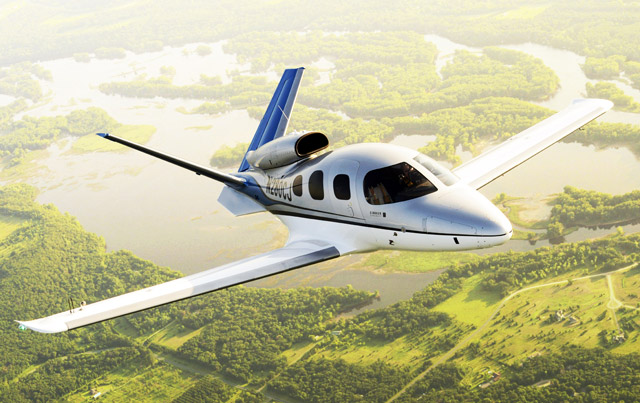Service entry of the first new generation single-engined personal jet has accelerated following the arrival of an autoclave oven at Cirrus Aircraft's Grand Forks, North Dakota facility which is dedicated to producing composite parts for the Vision SF50 personal jet and its SR series of piston singles.
Grand Forks is being expanded to accommodate the 40tonne, 40ft long autoclave, which will be operational in the middle of August and will shortly begin producing parts such as the carbon fibre main spar of the SF50. The six-seat aircraft will be assembled at Cirrus' Duluth, Minnesota headquarters.
 |
|---|
Cirrus |
"We are now seeing the full effects of the investment being made by our parent company [China Aviation Industry General Aircraft]," says Cirrus executive vice president for sale and marketing Todd Simmons. CAIGA acquired Cirrus in 2011 and has injected around $100 million into the programme to date. "We are committed to bringing this product to market and will deliver the first SF50 in 2015," he says.
The first of four SF50 flight test aircraft is earmarked for first flight early next year joining the technology demonstrator vehicle, which as already chalked up over 600h of flight tests to date which includes "detailed design, systems verification and full flight envelope testing", Simmons says.
Priced at $1.96 million, the SF50 is equipped with a Garmin G3000 glass cockpit, a Cirrus airframe parachute system and is powered by a Williams International FJ33 turbofan. It has a range of 1200nm (2,220km), stall speed of 61kt (113km/h) and cruise speed of 300kt. "This aircraft is hugely attractive not only to our SR20 and SR22 owners, but also to customers looking for something unique - the SF50 fills a space in the market that no other aircraft does." He is undaunted by the stubborn, protracted market downturn and the subsequent malaise among typical buyers of entry-level business aircraft. "We have had a consistently strong orderbook - now totalling in excess of 520 units - which is proof that the market is ready for an aircraft like the SF50," says Simmons.
Source: Flight International























